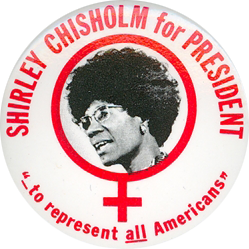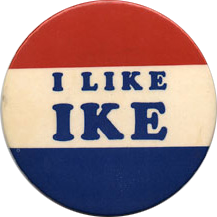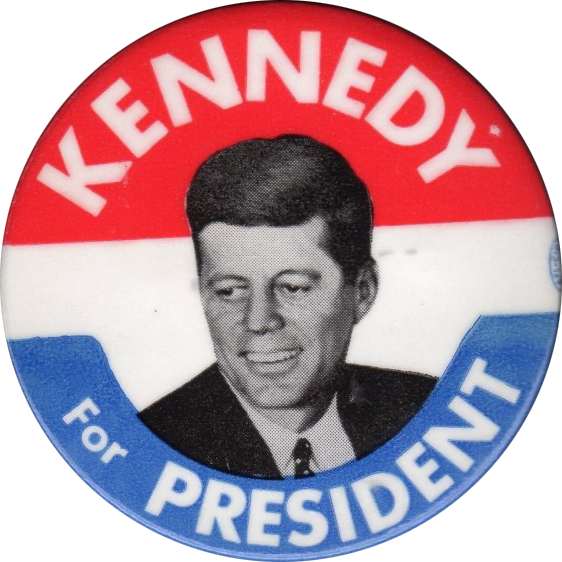Shepard Fairey on political art
Prelude
Conversation
Shepard Fairey on political art
As told to Brandon Stosuy, 1452 words.
Tags: Art, Politics, Inspiration, Identity.
Recently, you’ve been making artwork based on issues, and less on specific personalities. I’m curious about the shift away from individuals to battling the NRA or focusing on campaign finance reform.
There are a couple of reasons why I’ve shifted away from focusing as much on personalities. Not that I don’t occasionally indulge in a portrait celebrating or condemning someone, but generally speaking I feel our culture is too focused on celebrity and the superficial. A large number of my portraits have been celebrations of figures who inspire me through their creations, actions, and philosophies. I’ve made images of most of my heroes so I’d rather focus on issues than move into portraits of B-tier players [laughs].
Finding evocative imagery and symbols that can translate complex ideas in relatable ways is far more challenging than making portraits.
In terms of achieving what I’d like to achieve with my art—which is to encourage someone to think about an issue in a way they may not have—finding evocative imagery and symbols that can translate complex ideas in relatable ways is far more challenging than making portraits. At the same time, there may be no more effective means of impacting things—socially, politically, and conceptually—than portraits that potentially appeal in a more shallow way. Don’t get me wrong; I love the superficial as much as the next person, but I also like to weave in substance.

Visual Disobedience Mural Hong Kong, 2016, Art courtesy of Shepard Fairey/ObeyGiant.com

Shepard Fairey, Obama Hope, Version 1, 2008, Mixed Media (Stencil, Silkscreen, and Collage) on Canvas 48 x 72 in. (121.92 x 182.88 cm) Art courtesy of Shepard Fairey/ObeyGiant.com

Shepard Fairey, Pay Up or Shut Up, 2015, Mixed Media (Stencil, Silkscreen, and Collage) on Canvas 30 x 41 in. (76.2 x 104.1 cm), Art courtesy of Shepard Fairey/ObeyGiant.com

Shepard Fairey, Rise Above (Caliber), 2016, Mixed Media (Stencil, Silkscreen, and Collage) on Canvas 44 x 60 in. (111.8 x 152.4 cm), Art courtesy of Shepard Fairey/ObeyGiant.com

Shepard Fairey, Capital Gain Study, 2015, Mixed Media (Stencil, Silkscreen, and Collage) on Paper 16 3/4 x 18 1/4 in. (42.5 x 46.4 cm), Art courtesy of Shepard Fairey/ObeyGiant.com

Shepard Fairey, Fruits of our Labor, 2015, Mixed Media (Stencil, Silkscreen, and Collage) on Canvas 30 x 40 in. (76.2 x 101.6 cm), Art courtesy of Shepard Fairey/ObeyGiant.com

Shepard Fairey, Earth Crisis, Version 2, 2016, Mixed Media, (Stencil, Silkscreen, and Collage) on Canvas 44 x 60 in.(111.8 x 152.4 cm), Art courtesy of Shepard Fairey/ObeyGiant.com

Shepard Fairey, Time To Move On Study, 2015, Mixed Media (Stencil, Silkscreen, and Collage) on Paper 18 x 24 in. (45.7 x 61 cm), Art courtesy of Shepard Fairey/ObeyGiant.com
The current election quickly moved away from the issues to personalities. Is this also part of what inspired you?
Yes, but even prior to this election cycle, I’ve been troubled by the social media mentality of “construct your own reality” in superficial terms, at least. The internet and social media are valuable for democratization, but as Marshall McLuhan warned with his—”the medium is the message”—the rapid pace and temporary nature of social media can lead to throwaway approaches from the consumer and the creator. Aspects of this election cycle are systematic of the way media has changed and, of course, the personalities of the candidates, especially a reality TV star. I can’t blame the media only, though; the news is now a for-profit enterprise that supplies what its audience demands. Anyone who says the dynamics of capitalism solve all problems hasn’t watched the news lately.
Can you talk specifically about the Idiocracy art and the Make America Smart Again campaign? It’s a marked shift from HOPE. I mean, from positive to exasperated.
Anyone who isn’t exasperated right now isn’t paying attention. In fairness, I think Obama is a uniquely gifted communicator, who was a needed contrast to the darkness, fear, and cynicism of the Bush presidency. The optimism people felt about Obama, including me, might be a once in a lifetime thing—hopefully not, but possibly so. I created artwork for Bernie Sanders because Bernie Sanders’ ideas are ideas I agree with, and though I doubted that he would become the nominee, I wanted to demonstrate my support for his policy positions. I agree with most of Hillary Clinton’s policy positions, but I have disagreed with her on a few things like her support of the Iraq War, and her Wall Street ties. I’m also not a big fan of political family dynasties, though I think the Kennedy’s might be a positive exception.
The great thing about art is that it can break through pre-dispositions by impacting people emotionally. Then their intellectual side wants to justify their emotional response.
Make America Smart Again is an attempt to remind people what’s important. It’s pretty simple—educate yourself enough to genuinely understand the issues you’re voting for and where the various candidates stand on those issues. The main reason we decided to keep Make America Smart Again nonpartisan, even though I’m personally outspoken about my leanings, is that when told how to think, people tend to dig their heels in on their existing positions, rather than to look at a spectrum of views and possibly changing their opinion.
I’ve always loved the movie Idiocracy because it had the courage to say what a lot of people see but fear it won’t be politically correct to say—we have become a more and more anti-intellectual culture and society. Of course, Idiocracy is supposed to be set 500 years in the future, but I feel in the 10 years since the movie came out we are much closer to where Idiocracy said we’d be than I’m comfortable with. We did the Idiocracy screenings as part of Make America Smart Again to entertain and scare people. In other words, I think the film is a cautionary reality check.
Many people, who don’t know your earlier Andre the Giant stuff, know you based on HOPE. Is there a piece you’d rather them know you for?
I’m proud of the HOPE poster as a tool of grassroots activism, but I think it’s equally important for people to know about my OBEY campaign and its aim to encourage people to question everything they are inundated with. HOPE was a very sincere endorsement, but when people know my Obey campaign, they have a better perspective on my overall philosophy to question things and therefore, they might understand that my sincere endorsement of Obama was based on a genuine and rigorous analysis of his policy positions.
What role do you think political art has in the context of an election cycle? When you make something, what’s your hope for it? What does it do after it’s out in the world?
I think political art is great all the time, but of course during an election cycle politics are more of a focus for most people. The great thing about art, in general, is that it can break through pre-dispositions by impacting people emotionally; then their intellectual side wants to justify their emotional response. Understanding that about art, I feel that it’s important to use art as a tool of persuasion responsibly. Advertising uses the same techniques, not always for things that I think are good for people.
If art can crystalize a complex idea in a relatable way, it can create important conversations.
If art can crystalize a complex idea in a relatable way, it can create important conversations. Many people feel like spectators in our democracy because they don’t feel qualified to weigh in and they don’t think their vote counts for much anyway. Images that can generate a conversation empower people to feel confident about their right to voice their opinion, which leads to a more meaningful understanding of how they can participate in Democracy and empower themselves.














- Name
- Shepard Fairey
- Vocation
- Artist, Graphic Designer, DJ, Activist
- Fact
- Shepard Fairey is an American artist, graphic designer, DJ, and activist. He put his name on the map in 1989 with his “Andre the Giant Has a Posse” street art, while he was a student at the RISD. The sticker and graffiti campaign, which came to be known as OBEY, first grew out of the skateboarding scene. He co-founded Subliminal Projects in 1995 which has evolved into a gallery and project space now based in L.A. In 2003, he co-founded the Studio Number One design agency. His OBEY clothing brand was officially founded in 2001. Fairey became internationally known during the 2008 United States Presidential election for his Obama “Hope” poster. His work is now included in MoMA, The Smithsonian, LACMA, and the National Portrait Gallery in Washington D.C., among a number of other institutions. He lives and works in Los Angeles.

Some Things
Pagination



